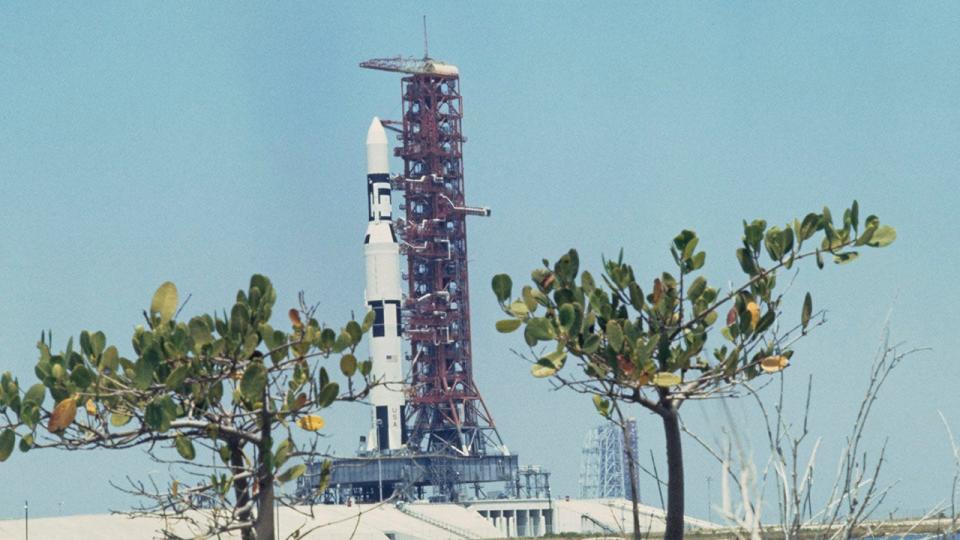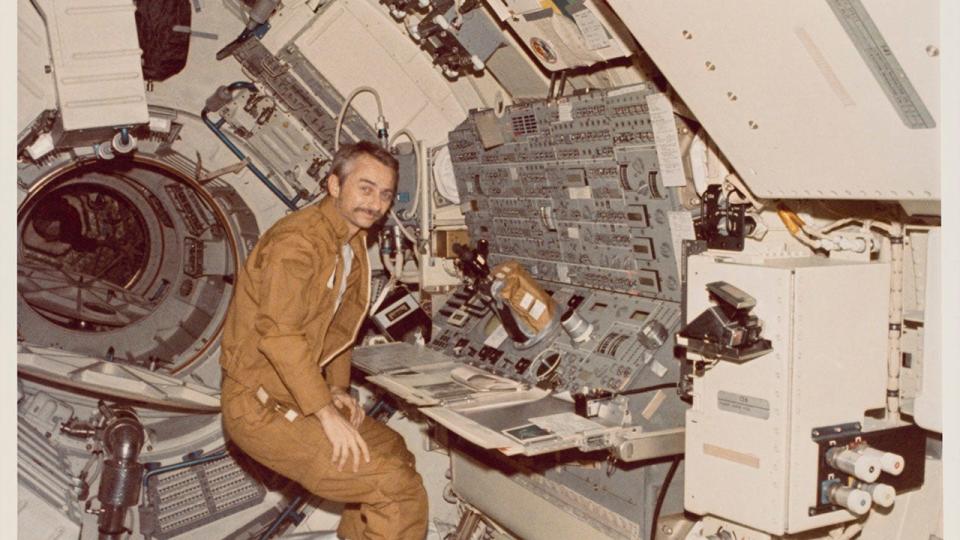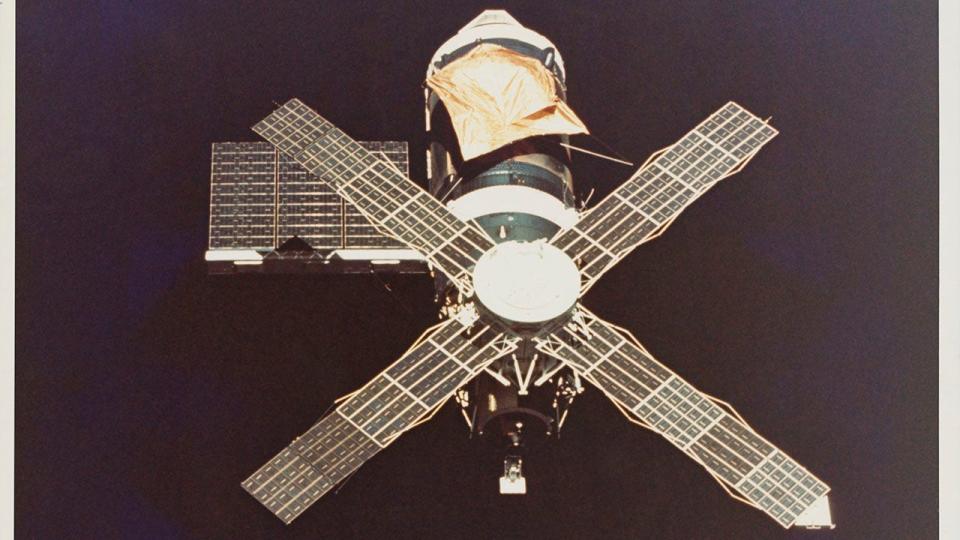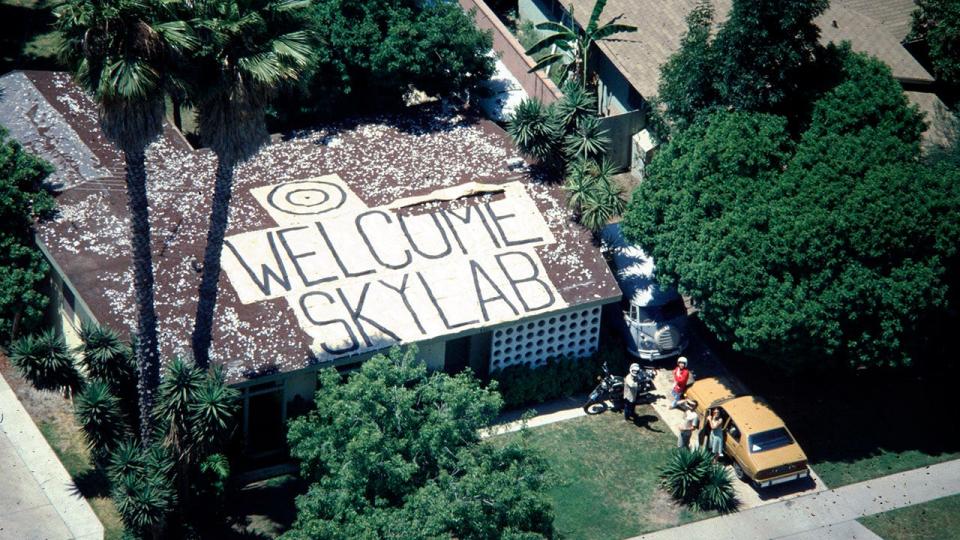On this day in history, May 14, 1973, Skylab, the first US space station, is launched

- Oops!Something went wrong.Please try again later.
America's first space station, Skylab, launched into Earth's orbit on this day in history, May 14, 1973.
The unmanned space station blasted into space on a modified Saturn V rocket at Florida's Kennedy Space Center, NASA's Skylab website reports.
This marked the last time the Saturn V rocket was used in spaceflight, according to Space.com.
ON THIS DAY IN HISTORY, MAY 13, 1981, POPE JOHN PAUL II SURVIVES ASSASSINATION ATTEMPT
The launch of the space station was not without complications.
"Almost immediately, technical problems developed due to vibrations during liftoff," said the NASA website.

"A critical meteoroid shield ripped off, taking one of the craft's two solar panels with it, and a piece of the shield wrapped around the other panel, keeping it from deploying," it said.
To solve this problem — and to prevent Skylab's future crew from dangerously hot temperatures due to the lack of meteoroid shield — NASA engineers "'rolled' Skylab to lower the temperature of the workshop," the website also noted.
Skylab 2, the mission that sent Skylab its first crew, was delayed for 10 days in order to teach the astronauts how to mitigate the damage the space station received on liftoff, said NASA.

Skylab finally received its first three-man crew on May 25, 1973.
Commander Charles "Pete" Conrad, pilot Paul J. Weitz and science pilot Joseph P. Kerwin would stay aboard Skylab for the entire 28-day mission, said NASA.
The crew would make history many times during their trip to space.
ON THIS DAY IN HISTORY, JULY 29, PRESIDENT EISENHOWER SIGNED BILL CREATING NASA
"On June 7, 1973, on their 14th day in space, Conrad and Kerwin floated out of Skylab’s Airlock Module. They set up a 25-foot pole with a cable cutter tool at the end that closed partway over the aluminum strap from the micrometeoroid shield that was holding down the solar array," NASA said.
The two carefully went to the solar wing and attached a rope to attempt to free the stuck panels.
"Kerwin closed the jaws on the cutter tool the rest of the way, slicing through the metal strap," the NASA website continued.

"The solar wing partially opened, but its hinge had frozen in the cold of space, preventing it from fully opening."
It added, "Conrad and Kerwin then both pulled on the rope to overcome the frozen hinge and the wing sprung fully open, bouncing the astronauts away — luckily their space suit tethers kept them from floating off into space."
MEET THE AMERICAN WHO WROTE THE MOON-LANDING SOFTWARE: MARGARET HAMILTON, COMPUTER WHIZ AND MOM
The spacewalk was a success — and Conrad and Kerwin became the first astronauts to ever engage in a "repair spacewalk," said NASA.
Additionally, the length of their spacewalk, three hours and 25 minutes, was a record.
When the three astronauts returned to Earth — 28 days and 50 minutes after blast off — they had set a new record for longest human space flight, said NASA.
They were also the first astronauts to return alive from a mission to a space station, NASA also noted. (The crew of the Soviet space station Salyut 1, the world's first space station, died upon re-entry.)

Skylab would remain in space until July 11, 1979, when it disintegrated in Earth's atmosphere, according to Space.com.
CLICK HERE TO SIGN UP FOR OUR LIFESTYLE NEWSLETTER
Parts of Skylab were found in Australia and in the Indian Ocean — and one Australian town even fined NASA for littering, the site added.
The space station had been unoccupied since February 1974, when the crew of Skylab 4 departed back to earth, said NASA.
Today, the International Space Station (ISS) orbits Earth at an average altitude of 248 miles (400 kilometers). It circles the globe every 90 minutes — and in one day, the station travels about the distance it would take to go from Earth to the moon and back, according to Space.com.
The ISS is a partnership of five space agencies from 15 countries that contributed different parts, Space.com also noted.
The ISS contains parts "provided by the United States, Russia, Japan, Canada, and the countries comprising the European Space Agency."
For more Lifestyle articles, visit www.foxnews/lifestyle.
Original article source: On this day in history, May 14, 1973, Skylab, the first US space station, is launched

